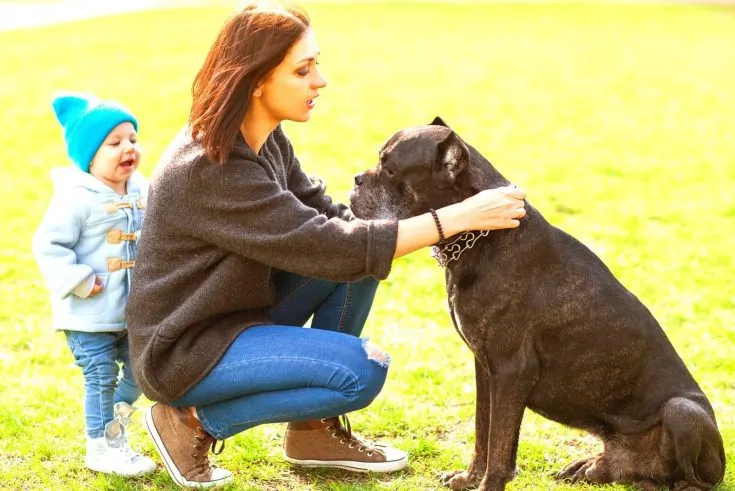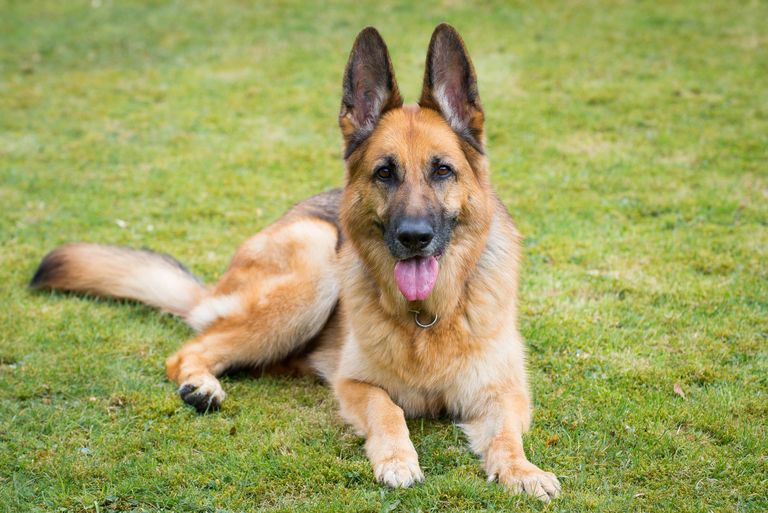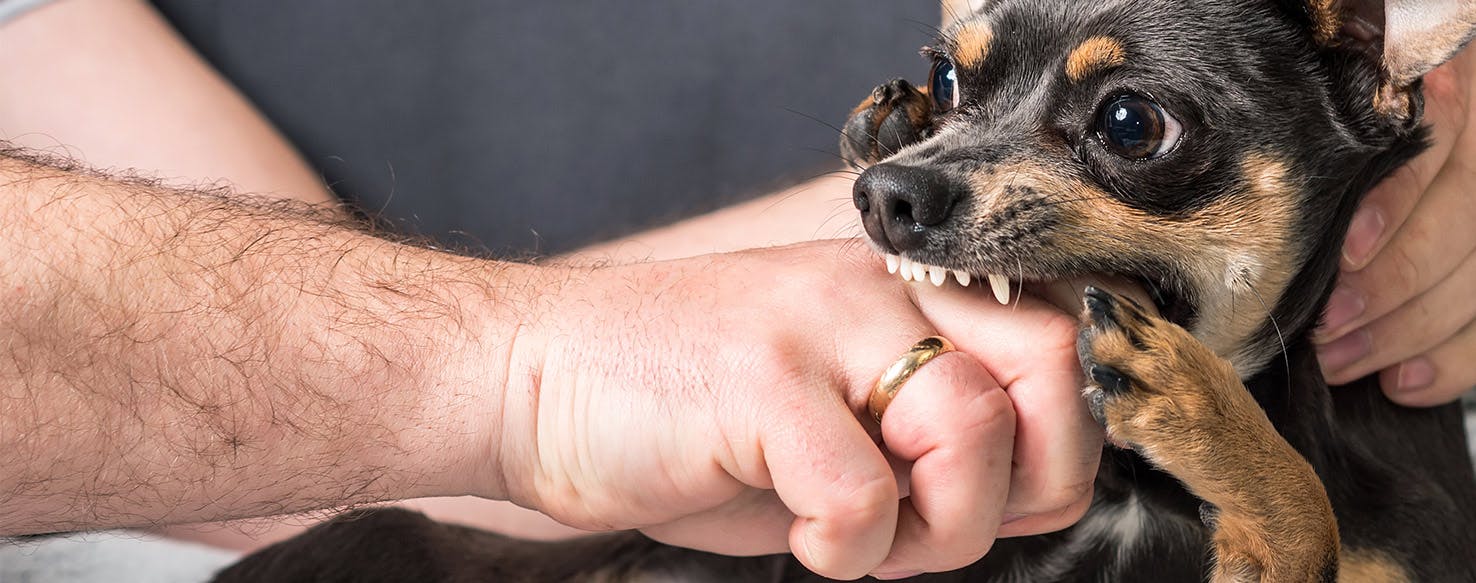
Protective dogs are those who do what is natural to help. They survey their surroundings and determine if everything is okay.
Owners who want to decrease protective behavior in their dogs often ask about ways to reduce aggressive behavior.
There is a difference and that is what we will be discussing today.
Continue reading to find out if your dog is protecting you, and not just being aggressive.
Understanding Protective Behavior
Dogs don’t need to be taught how to protect their protective nature. They are actually doing their job as members of the pack.
According to, dogs are pack animals. A part of a pack’s responsibility is to ensure safety for the rest of the pack.
Even if you don’t believe that dogs are pack animals (latest research suggests they may not be with “suggests” being the keyword there), you can’t deny their strong instincts.
Dogs often have strong instinctive protective drives that are ingrained in their DNA. That’s fine.
Most people are concerned about having an aggressive dog. It is important to know the difference.
Protective Behavior

You’ve probably seen a German Shepherd in action. His head is twisted. He is constantly scanning the area. When a new animal or person comes into view, he may raise his ears.
He may even be able to calmly move in between his owner or the newcomer to the area. He is gentle and calm, but alert.
Dogs will return to the activities they were doing before the stimuli were introduced if there is no threat.
However, if a threat is felt, the dog may growl or bark to alert others. This is what a protector dog does.
Signals your dog is protecting you
- Continuous Vigilance
- New Stimuli for the Environment: Immediate Attention
- Alert, but calm posture
- Moving between Owner and Possible Threat
- Perceived Threats: Growling or Barking
- If there is no threat, return to normal
Causes of protective behavior
This behavior is not a cause. Dogs are hardwired with protectiveness in their DNA. Dogs descend from wolves which are pack animals.
Wolves team up to raise their pups and protect each other. It is in their best interests to look after one another.
This is the behavior we see among protective dogs. This is their natural instinct to protect the pack.
Aggressive Behaviour

Aggressive behavior can be very different from protective behavior and is not something that dogs should have.
While protective dogs assess situations and determine if there are any threats to be seen in them, aggressive dogs view everything as a threat.
They do not have any monitoring behavior. Instead, they instantly go into an aggressive mode that can sometimes lead to physical violence.
Recognize the signs of aggressive behavior.
Sings of aggressive behavior
- Reactions to situations that are too aggressive
- Immediate Barking
- Growing
- Raised Hackles
- Lunging
- Baring Teeth
- Snapping
- Resource guarding
- Territorial Urination (Marking at the Home)
- Biting
- Crouched Stance
- An aggressive, overly aggressive posture (Head far forward, usually paired with raised hackles).
Causes of aggressive behavior
Aggressive behavior is almost always a result of outside stimuli.
Some dogs are more aggressive than others, but aggressive behavior can be learned and cause serious problems for the dog and its owner.
This behavior is more complex than protection behavior because the reasons for it are as broad as the outlets that dogs allow it.
- Missbrauch
- Insufficient resources, such as food and water
- Attack by another animal or dog
- A Shelter is a Lifetime Investment
- Living on the Streets (Feralness).
- Inadequacy of Socialization
Types of aggressive behavior
- Territorial Aggression (Guarding of Spaces).
- Resource guarding Food, Water, Toys, Etc.
- Dominant Aggression
- Predatory Aggression (Attacking smaller animals)
- People Aggression
- Dog-to-dog aggression
Curing aggressive behavior
Although aggressive behavior is not always an issue, it is a sign of aggression and should be addressed immediately.
This behavior can be dangerous for the owner as well as those around it. However, there are ways to reduce or eliminate it.
Preventative measures are often used to stop aggressive behavior from continuing.
Work for yourself
To curb aggression, you must control your reactions. Many dog owners will punish their dog by pulling on the leash or shouting at him to stop.
This will only make your dog more agitated. Instead, calmly and soothingly approach any aggression.
Do not yell, yank, or do anything that could increase the volatility.
Instead, calmly and calmly remove your dog.
Desensitization
It is a great way to curb aggressive behavior.
If your dog is aggressive towards strangers, for example, you can show him that it’s okay to be around them.
- Give small portions of your dog’s favorite food to a friend.
- The friend should calmly enter the room, and immediately start to throw treats at your dog.
- Continue this process until your dog responds to treats and not aggressively.
Your dog will eventually learn to associate positive things with people who enter the room.
Socialization
Desensitization and socialization go hand-in-hand. Socialization can be thought of as desensitization to animals and new people.
- Start by walking your dog more often when there are others around.
- Use a calm tone and a tight leash.
- Give your dog a treat every time he sees an animal.
- This should be done immediately before the dog has a chance to lunge or bark.
- This process should be repeated for every animal or person he meets.
You can calmly and quickly move on if he gets aggressive. If he does not bark, praise him and give him treats.
Your dog will soon learn that it is much more enjoyable and rewarding for him to be calm and get treats.
After your dog has learned to associate positive behavior with treats you can take him to more people and animals.
These pet-friendly shops and dog parks can be a good starting point. Keep your pet at the perimeter and praise him when he is not acting aggressively.
You can slowly work your way into the action by continuing to praise and treat him, which will help you socialize your dog.
The difference between protective and aggressive behavior
Protective behavior doesn’t have to be a negative thing. It’s actually a positive thing. It’s important to distinguish between aggressive and protective behavior.
- Protective behavior refers to calmly assessing a situation and determining the appropriate response.
- Aggressive behavior refers to an immediate violent response to a stimulus.
Do not confuse one with the other. Aggressive behavior can result in attacks from your dog or towards him, bites, and, in extreme cases, death of your dog.
These guidelines will help you recognize the difference between aggressive and protective behavior. If necessary, use the strategies below to curb aggressive behavior.
These are only a few of the many strategies that you can use. For the best results, it is best to consult a professional trainer to curb aggressive behavior in your dog.